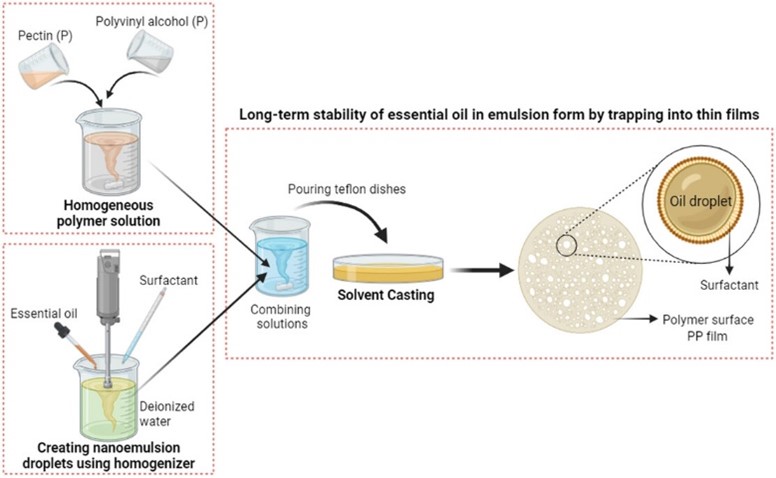Infected wounds are difficult to treat due to bacterial resistance and the need for sustained antibacterial environments. This study addresses the need for biocompatible wound dressings that can deliver natural antibacterial agents effectively over time.
The key finding of the team, including Didem Demir from Tarsus University, Mersin, Türkiye, and colleagues, is that Melaleuca essential oil nanoemulsions, when embedded into pectin:polyvinyl alcohol (Pec:PVA) patches, create a stable, antibacterial wound dressing. They prepared nanoemulsions of essential oils from the Melaleuca family (like tea tree oil) using surfactants to stabilize the oil droplets in water. These nanoemulsions were then impregnated into a film matrix made of pectin (a natural polysaccharide) and polyvinyl alcohol (a synthetic polymer known for film-forming ability). The films were cast and dried to form flexible patches. The chemistry involved centers on physical entrapment of nano-sized oil droplets within a hydrophilic polymer network, allowing controlled release of antibacterial agents.
The polymeric patches loaded with Melaleuca essential oil nanoemulsions showed strong antibacterial activity against common wound-infecting bacteria like Staphylococcus aureus and Escherichia coli; they demonstrated a sustained release of essential oil over time. The films were flexible, smooth, and uniform, with good swelling behavior—meaning they can absorb wound exudate while staying intact.
This work suggests a natural, low-cost, and effective alternative to synthetic antibiotics in wound care. The patches could be further developed for clinical use, especially in treating chronic or infected wounds. Future directions include in vivo testing, scaling up production, and exploring other essential oils or polymer blends.
- Impregnation of Melaleuca Family Essential Oil Nanoemulsions into Pectin:Polyvinyl Alcohol Patches to Provide an Antibacterial Environment for Infected Wounds
Didem Demir, Seda Ceylan, Semih Latif İpek, Deren Aslan, Veli Özbolat
ChemistryOpen 2025
https://doi.org/10.1002/open.202500117



